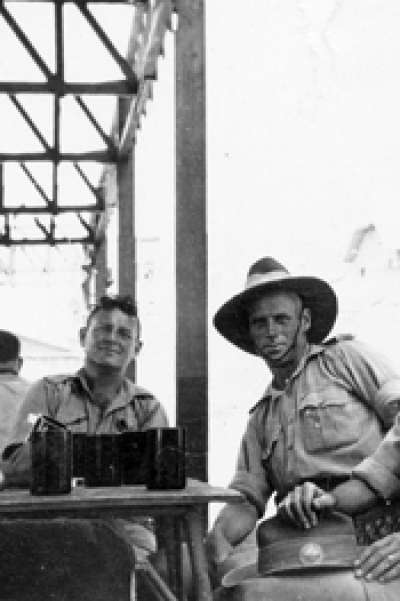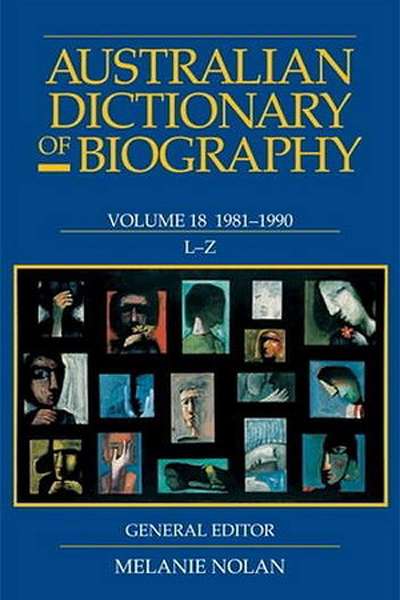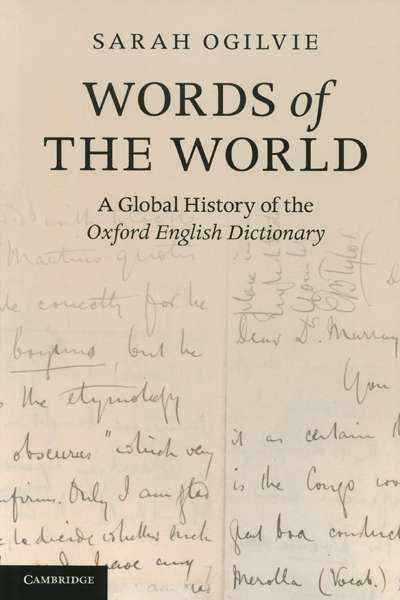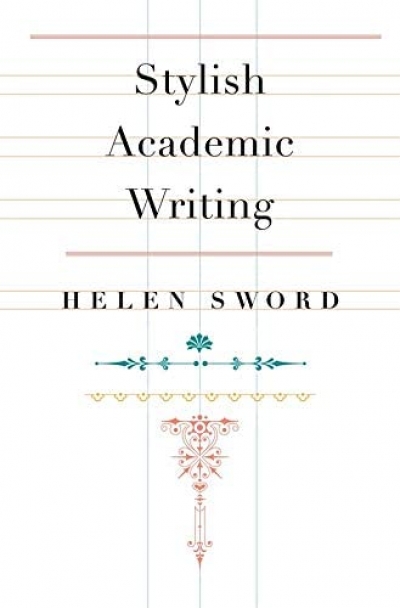Language Column
The relationship between the world of soldiers and the world of civilians has long been a topic of interest to historians and other scholars of war. Joan Beaumont’s significant new book Broken Nation: Australians in the Great War (reviewed in ABR, February 2014) emphasises the importance of considering the war front and home front side by side, and a ...
Australian Dictionary of Biography, Volume 18: 1981–1990 (L–Z) edited by Melanie Nolan
In his brief preface to Volume 1 of the Australian Dictionary of Biography 1788–1850 A–H (1966), Douglas Pike describes the ‘all-Australian, Commonwealth-wide … consultation and co-operation’ underpinning the volume and notes that the breadth and complexity of its intellectual network meant the Dictionary could ‘truly be called a national project’. Five decades later, in an informative, elegant introduction to Volume 18, the present general editor, Melanie Nolan, endorses Pike’s pioneering claim for the ADB, describing it as ‘a national collaborative project, the largest and longest running of its kind in the social sciences and humanities in Australia’. As such – ‘a reference work for many purposes’ – it is familiar territory to historians, researchers, biographers, film-makers, novelists, and any number of browsing general readers.
... (read more)Mary Cunnane, who has worked in the publishing industry since 1976, laments the laziness and irritation of those publishers who resent and underestimate unsolicited submissions from authors
... (read more)Words of the World: A Global History of the Oxford English Dictionary by Sarah Ogilvie
Nothing ever gets taken out of the Oxford English Dictionary (OED) – at least, that’s what I believed until I read this book. Words which are no longer used simply stay where they are, complete with their quotations, and the addition of a small dagger symbol (†) to signify their obsolescence: for example, †devouress (defined in 1895 as ‘a female devourer’), whose earliest known use was in John Wycliffe’s 1382 translation of the Bible, and whose most recent known use was in a 1611 dictionary of the Italian and English tongues. So it was shocking to discover that OED editor Robert Burchfield removed a considerable number of words from the four supplementary volumes of the dictionary, the first of which appeared in 1972.
... (read more)Dr Johnson wrote in his review of Soame Jenyns’s A Free Enquiry into the Nature of the Origin of Good and Evil: ‘The only end of writing is to enable the readers better to enjoy life, or better to endure it.’ One could argue, in the context of contemporary scholarly writing, that increasingly the only end is to satisfy the evaluative demands of research councils and university administrators. The controversial use of quantitative publications figures, as in the 2012 Sydney University assessment of individual researchers, reflects the fact that scholarly behaviour, more than ever, is being shaped by the reward trail, one that is almost as dependent on where and how you publish as it is on the actual content.
... (read more)Historical dictionaries depend on quotations to exemplify how a word is used over time. An unsung hero of Australian lexicography, who contributed more than 100,000 quotations to the Australian National Dictionary (AND) and Oxford English Dictionary (OED) over a period of thirty years, died two years ago this month. Mr Chris Collier of Brisbane had spent every day since the mid-1970s combing the Courier-Mail newspaper for new words and new senses of words, which he then glued to 4 × 6 slips and sent to the Australian National Dictionary Centre (ANDC). Extremely private, he only provided us with a PO Box address. In many ways, he was a modern-day Dr Minor (1834–1920), the nineteenth-century contributor to the OED whose fascinating life is described in Simon Winchester’s The Surgeon of Crowthorne (1998).
... (read more)When the ALP conference voted to amend the party platform on same-sex marriage at the end of last year, there was a flurry of debate in magazines, newspapers, and online. The platform now states: ‘Labor will amend the Marriage Act to ensure equal access to marriage under statute for all adult couples irrespective of sex who have a mutual commitment to a shared life.’ For lexicographers, this event meant that the word marriage appeared in Australian sources with greater frequency than ever – and with a greater variation of meanings. Whatever the word’s official definition in Australian law or in the minds of those opposed to the notion, suddenly there was an abundance of evidence that Australians were using the word marriage to refer to the union of two people regardless of sex, and that eventually this would have implications for the definition of the word in all our dictionaries. In addition to new expressions such as marriage equality, there were also new senses of old words such as marry, husband, wedding, widow, widower, and wife.
... (read more)A few years ago, Peter Austin and David Nathan, two Australian linguists working at the School of African and Oriental Studies in London, discovered that their dictionary of Kamilaroi, an Aboriginal language of New South Wales, was for sale on Amazon. The only problem was that they had not put it there and it had someone else’s name on it. Philip M. Parker, having found their Kamilaroi/Gamilaraay Web Dictionary on the Internet, repackaged it, listed himself as author, published it through his own company (ICON Group International), and offered it for sale on Amazon as part of his Webster’s Dictionary series (the ‘Webster’s’ name has been in the public domain since 1910, so there are thousands of Webster’s dictionaries from various publishers). Parker has published more than 1400 of these ‘parasitic dictionaries’ of languages such as Bemba, French, Portuguese, Samoan, Hmong, Uyghur, Fijian, and Saami.
... (read more)Every day for the past few months, the Sydney linguist Michael Walsh has been sitting in the Mitchell Library poring over old manuscripts. He is extracting old wordlists of Aboriginal languages from the library’s rich collection of early British settler diaries, missionary field notes, and unpublished historical documents for a project funded by the State Library of New South Wales and Rio Tinto. This week, Michael sent me twelve scanned pages of a leather-bound diary he discovered which belonged to Richard Tester, who had recorded his daily adventures in 1860, travelling overland from Kerkaraboo on the Wakefield River to Melbourne and the goldfields.
... (read more)We are on the verge of another revolution in dictionary-making. Since the seventeenth century there have been three major revolutions in lexicographic practice. In 1604 Robert Cawdrey produced the first monolingual English dictionary, which was – radically – arranged alphabetically. In the middle of the eighteenth century, Samuel Johnson employed literary citations to illustrate the meaning of the words in his dictionary. And in the nineteenth century, James Murray began to produce the first great historical dictionary, tracking the use of a word over time, and extended the making of dictionaries beyond his Scriptorium of lexicographers working in Oxford by calling on contributions from around the globe. This was an enormous undertaking, and the first edition of the Oxford English Dictionary (OED), begun in 1859, was not completed until 1928 (the second edition followed in 1989, and the third edition, published quarterly online, was begun in 2000).
... (read more)




